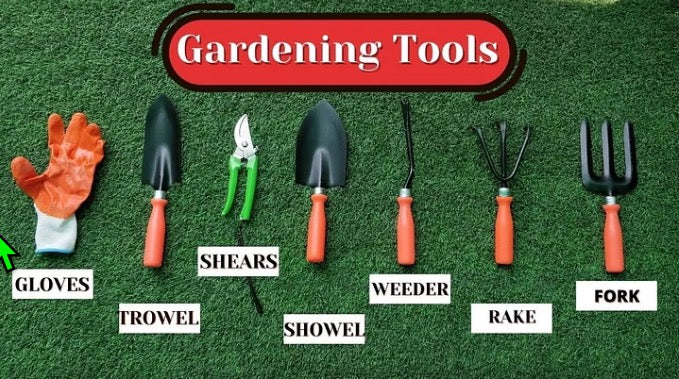1 (888) 531-7511

THE BEGINNER’S GUIDE TO GARDENING TOOLS
Written by Lew Amicone
Gardening can be a rewarding hobby, whether you grow vegetables, flowers, or both. Not only can you get beneficial exercise as you work to grow plants, but you can also enjoy the fruits of your labors as beautiful flowers or vegetables. You'll need a variety of different tools to garden, including hand tools, larger tools with long handles, and even power tools. Some gardening equipment is designed to protect you from injury as well.
Hand Tools
Avid gardeners tend to collect an impressive stock of gardening tools used to work the soil. Many hand tools are easily stored and organized in a workbench or a garden shed. Some of the common hand tools you'll want to add to your inventory include a hand trowel, hand rake, pruning shears, gardening scissors, and a weeding tool that enables you to dig out weeds by the roots. Always maintain your gardening tools carefully, cleaning them completely after using them and before storing them so they don't rust.
Long-Handled Tools
A garage or a garden shed may be the place where you store long-handled tools used to cultivate the soil. These tools can be heavy, so you'll need a secure way to store them. Some gardeners use a rack system on the wall of the garage or shed. Keep your rakes, hoes, spades, pitchforks, and shovels upright and in sight for easy access. Long-handled pruners will be important implements to add to your inventory as well. Anvil pruners are used to cut through twigs and branches less than 5/8 inch in diameter. Bypass pruners are stronger than anvil pruners, and they easily cut through green stems when you don't want to leave a ragged cut behind. Bypass pruners are also used for anything 5/8 inch or less in diameter. Reach for the hedge shears to maintain your shrubs when the branches are less than 2¼ inches in diameter. Hedge shears are like giant scissors. A pole pruner is the tool to use when you need to reach shrubs or trees that are more than 8 feet tall. Pole pruners will cut branches less than 1¼ inches in diameter. For larger branches, a pruning saw is the tool to use. Pruning saws are ideal for branches larger than 1½ inches in diameter.
Power Tools
Gardeners may need to reach for power tools from time to time to get the job done. Power tools might be powered by electricity, batteries, or gas. A power pole saw can make quick work of tree pruning. A power hedge trimmer makes shaping and pruning shrubs and hedges much faster and easier. A power edging tool helps you keep the edges of walkways, sidewalks, and driveways neat and tidy. A string trimmer cuts grass that grows around trees, buildings, and fences to keep your lawn neat. Use an electric, battery-powered, or gas-powered rototiller to loosen soil in your vegetable or flower gardens. Rototillers come in many different sizes to handle your tilling needs. Lawn maintenance might also involve a chain saw, useful for tree maintenance.
Protective Tools and Gear
Protective gear can help keep you safe from injury while you're outdoors gardening and working in the yard. Gardening gloves help keep your hands cleaner, especially when you're digging in the soil, and they can also protect you from thorns. Wearing a gardening hat protects your head and face from sun exposure. It's also important to wear long sleeves, long pants, and closed-toe shoes if you'll be using dangerous equipment. For long afternoons of planting or weeding, using a knee pad can save your knees from painful contact with the hard ground. Some knee pads are easily positioned and moved where you need them. You might also opt for a storage cart with a padded seat on top, which provides a comfortable place to sit while you work as well as space to carry your tools out to the garden.
Gardening Resources
- Garden Tools
- Types of Tools
- Home Gardening Implements
- Caring for Garden Tools
- Maintaining Lawn and Garden Tools
- Cleaning Garden Tools
- The Importance of Ergonomics in the Garden
- Making Gardening Comfortable
- Choosing Garden Tools
- Garden Tool Care and Maintenance
- Gardening Without Pain: Tips for Using and Modifying Tools
- Hand Tool Safety: Lawn Care Training Guide
- Lifelong Gardening Inventory Toolbox
- Sharp Tools Are Essential for Gardeners
- Planning a Vegetable Garden
- Monthly Garden Checklist
- Kid-Friendly Gardening Tools
- Make Gardening Easier With these Helpful Garden Tools
- Eight Important Gardening Tools to Groom Your Gardens
- Gardening Tools
- Gardening Tools Every Gardener Should Have

Leave a comment